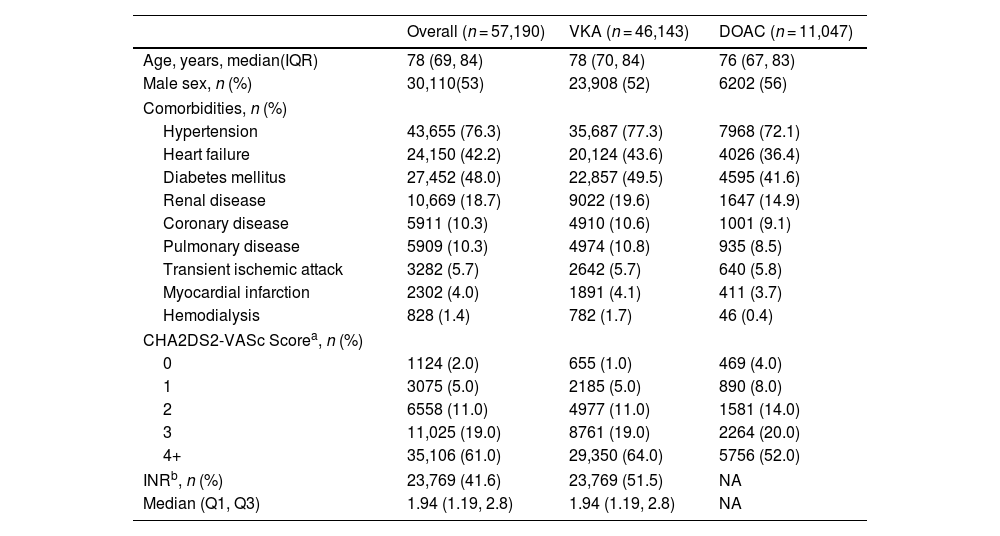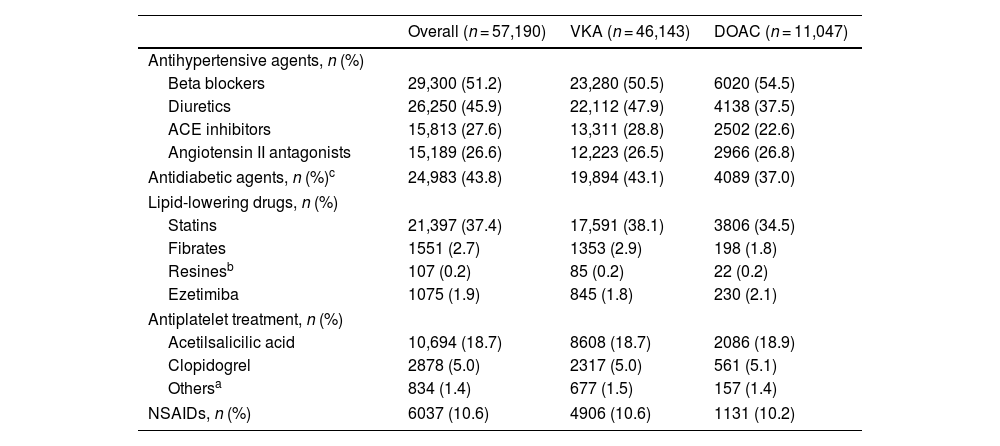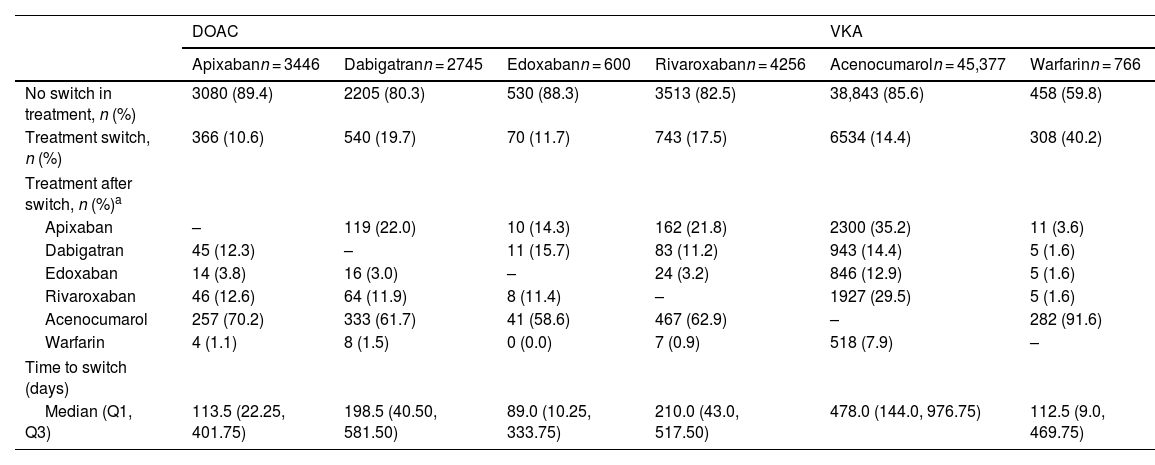Oral anticoagulation (OAC) is key in atrial fibrillation (AF) thromboprophylaxis, but Spain lacks substantial real-world evidence. We aimed to analyze the prevalence, clinical characteristics, and treatment patterns among patients with AF undertaking OAC, using natural language processing (NLP) and machine learning (ML).
Materials and methodsThis retrospective study included AF patients on OAC from 15 Spanish hospitals (2014–2020). Using EHRead® (including NLP and ML), and SNOMED_CT, we extracted and analyzed patient demographics, comorbidities, and OAC treatment from electronic health records. AF prevalence was estimated, and a descriptive analysis was conducted.
ResultsAmong 4,664,224 patients in our cohort, AF prevalence ranged from 1.9% to 2.9%. A total of 57,190 patients on OAC therapy were included, 80.7% receiving Vitamin K antagonists (VKA) and 19.3% Direct-acting OAC (DOAC). The median age was 78 and 76 years respectively, with males constituting 53% of the cohort. Comorbidities like hypertension (76.3%), diabetes (48.0%), heart failure (42.2%), and renal disease (18.7%) were common, and more frequent in VKA users. Over 50% had a high CHA2DS2-VASc score. The most frequent treatment switch was from DOAC to acenocoumarol (58.6% to 70.2%). In switches from VKA to DOAC, apixaban was the most chosen (35.2%).
ConclusionsUtilizing NLP and ML to extract RWD, we established the most comprehensive Spanish cohort of AF patients with OAC to date. Analysis revealed a high AF prevalence, patient complexity, and a marked VKA preference over DOAC. Importantly, in VKA to DOAC transitions, apixaban was the favored option.
La anticoagulación oral (ACO) es clave en la tromboprofilaxis de la fibrilación auricular (FA), pero España carece de evidencia relevante en el mundo real. Nuestro objetivo fue analizar la prevalencia, las características clínicas y los patrones de tratamiento en pacientes con FA en tratamiento con ACO, utilizando el procesamiento del lenguaje natural (PLN) y el aprendizaje automático (ML).
Material y métodosSe realizó un estudio retrospectivo en pacientes con FA en tratamiento con ACO de 15 hospitales españoles (2014–2020). Utilizando EHRead® (incluyendo PNL y ML), y SNOMED_CT, extrajimos y analizamos los datos demográficos de los pacientes, las comorbilidades y el tratamiento con ACO de las historias clínicas electrónicas. Se estimó la prevalencia de FA y se realizó un análisis descriptivo.
ResultadosDe los 4.664.224 pacientes de nuestra cohorte, la prevalencia de FA osciló entre el 1,9% y el 2,9%. Se incluyeron un total de 57.190 pacientes en tratamiento con ACO, de los cuales el 80,7% recibía antagonistas de la vitamina K (AVK) y el 19,3% ACO de acción directa (ACOD). La mediana de edad fue de 78 y 76 años, respectivamente, y los varones constituyeron el 53% de la cohorte. Las comorbilidades como hipertensión arterial (76,3%), diabetes (48,0%), insuficiencia cardíaca (42,2%) y enfermedad renal (18,7%) fueron frecuentes y más frecuentes en los usuarios de AVK. Más del 50% tenía una puntuación alta de CHA2DS2-VASc. El cambio de tratamiento más frecuente fue de ACOD a acenocumarol (58,6% a 70,2%). En los cambios de AVK a ACOD, apixabán fue el más elegido (35,2%).
ConclusionesUtilizando PNL y ML para extraer la RWD, establecimos la cohorte española más completa de pacientes con FA tratados con ACO hasta la fecha. El análisis reveló una alta prevalencia de FA, complejidad de los pacientes y una marcada preferencia por AVK sobre el ACOD. Es importante destacar que, en las transiciones de AVK a ACOD, apixabán fue la opción preferida.
Article
Diríjase desde aquí a la web de la >>>FESEMI<<< e inicie sesión mediante el formulario que se encuentra en la barra superior, pulsando sobre el candado.

Una vez autentificado, en la misma web de FESEMI, en el menú superior, elija la opción deseada.

>>>FESEMI<<<










